Now well established on the digitial music market with a range of devices including network drives, amplifier, speakers, and CD rippers, the Bluesound cataolgue has been further enriched by a new generation of flagship models for demanding audiophiles: the Node, Powernode, and Vault.
If the name of the new model simply adds the number '2' to the first-generation model, the updated design is definitely more intelligent than the first.
The Node 2 is the object of our benchmark today. It's compatible with playing Hi-Res audio, has the Qobuz Music app integrated and can form part of a multiroom system.
The Bluesound Controller App is available for Apple iOS, Android, Kindle Fire, Windows and Mac OS X.


Appearance
Back to the drawing board for Bluesound, who abandon the origina designs its first generation of devices and opts for a more classic design but still very personal.
The Node 2 is very elegant, whether housed in white or black resin casing, with its rounded corners and blacking edging across the middle of the frame, revealing a multi-color LED which indicates the status of the device. Under this LED there is a standard 3.5mm headphone jack which automatically disconnects the line output.
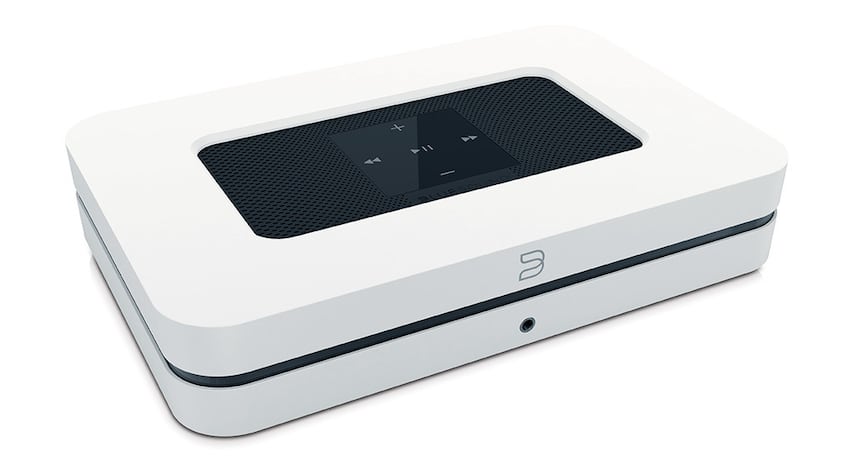
A micro-perforated metal grid takes place in a wide recess in the upper face of the Node 2, at the center of which are the touch controls for the device (play/pause function, skip forward, skip back, volume controls, etc) which are backlit in white.
The Connectivity of the Bluesound Node 2 is quite extensive in spite of the reduced size of the device with respect to its predecessor. There are analogue stereo outputs (fixed and variable) and an output for a subwoofer. We then have two digital S/PDIF outputs, a Toslink-standard coaxial Cinch connector, and an S/PDIF input to standard optical Jack combined with an input for stereo analogue.

A trigger output and an input for remote control receiver signals are also available in the form of two standard 3.5mm jacks, while a RJ45 connector for the network is shared with a USB input to connect a USB A storage device. The mini USB is reserved for service operations initialized by pressing the push button to its right.
Manufacturing
The inner surface of the casing for the Node 2 network player is occupied by the main switchboard and power supply. The circuit that consolidates orders is mounted on the upper surface and has its own microcontroller, a PIC32MX330F06 Microchip. Antennas for WiFi and Bluetooth links are also located on this side of the casing.
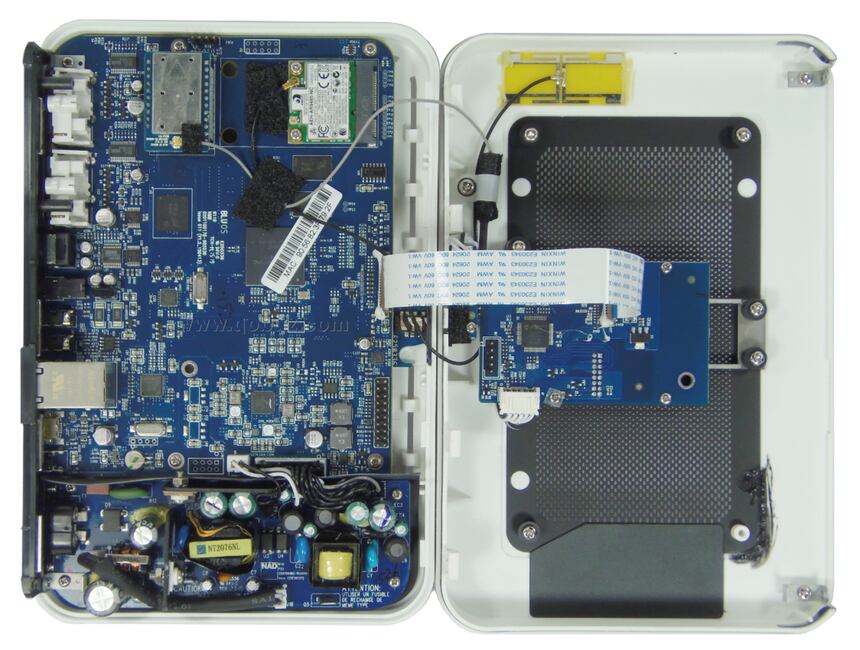
Below is a close-up view of the main board, with the power occupying its own secluded corner noted by a thick cardboard bottom of the casing (one can also notice the inscription 'NAD' on the power circuit).
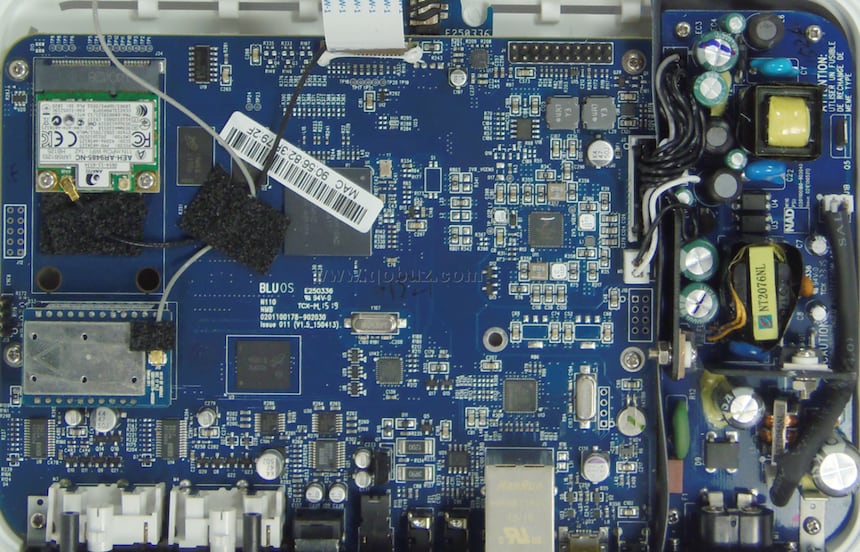
On the right hand side of the image blow, near the power supply, one can see a Richtek RT8293A chopper circuit and a supervisory power circuit (Freescale MMPF0100).
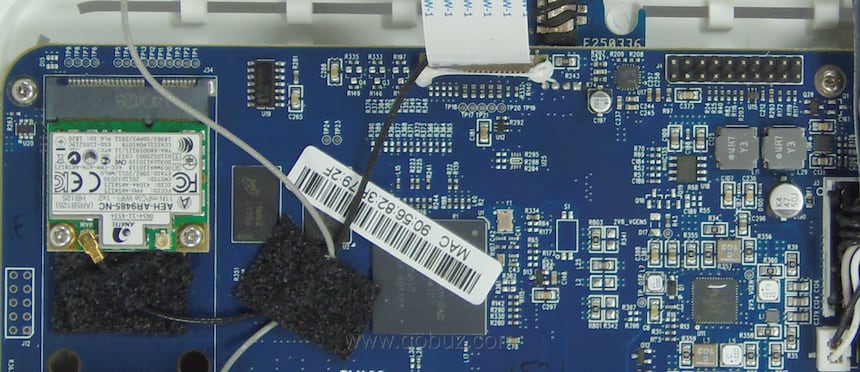
The ANATEL AEEH-AR9495-NC WiFi module is found completely to the left, and the stream is be processed by a powerful Freescale ARM multicore processor iMX6 the series associated with two RAM (random access memory) 1GB Micron Technology. At the top, between the two connectors, is the headphone amplifier, a TPA6130A2 Texas Instruments model of which we have already been able to appreciate the sound qualities.
On the right side of the below image we can see the wired network view of the RJ45 input, which is managed by an SMSC circuit (Microchip) while the LAN8820 USB input A is supported by a USB2514 chip, also manufactured by SMSC.
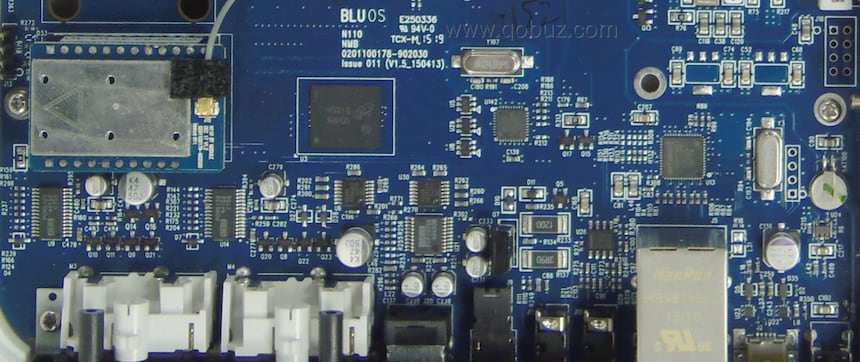
Then comes the FLASH memory Micron Technology and aptX Bluetooth module under which two analogue-digital converters Burr-Brown PCM5122 can be found. These two PCM5102 chips are compatible with 24-bit files up to 192kHz and incorporate mini digital signal processors (DSP).
One of the PCM5122 is assigned to the standard stereo output, and the other to the output for subwoofer. Thanks to the multilevel structure, these chips do not require additional filtering and used here in this way, which we think is very favourable for the sound quality.
The analogue signals entering the 3.5mm input on the rear panel are digitized at 24-bit/96kHz by a Burr-Brown PCM1803 analogue-digital converter .
Use & Listening
Pour les écoutes, nous avons raccordé la sortie stéréo analogique à un amplificateur Sony UDA-1 pilotant des enceintes Triangle Antal Anniversarry afin d'apprécier la qualité de la conversion et non pas en utilisant une sortie numérique reliée à un DAC.
And we were not disappointed, with the resitution of the timeless classic Private Investigations from the album Love Over Gold by Dire Straits, earning nothing but praise from our hi-fi specialists. The music flows without any trace of roughness; it breathes, lives, and evolves with each listen.
A similar moment of immeasurable pleasure with the acoustic version of the global hit Hotel California from the album Hell Freezes Over by the Eagles, where the atmosphere is rendered truthfully upon the listener and we fully appreciate the wonderful guitar playing and the harmonies, all of which are reproduced smoothly. In short - very, very good!
Nothing more to say about the aptX Bluetooth link with which pairing devices poses no problem at all and offers very good sound quality. Note that the application also allows for the employment of tone correctors, but the sound quality is slightly worse in when this function is activated, even with the settings to zero (probably the DSP integrated into the DAC PCM5122). Something to watch out for.
In conclusion, the Bluesound 2 Node network drive is an excellent network drive with a clever, modern design. It is very easy to integrate into your hifi system and offers first-class sound performance via its analogue and headphone outputs. Qobuzism!
To follow everything that happens at Qobuz, like us on Facebook!
If you are a constructer, importer, distributor, or agent in the field of sound reproduction, and would like to contact us, please do so through the following address: newstech@qobuz.com
If you are passionate about the contents of our Hi-Fi Guide, and would like to contact us, then please do so through the following address: rubriquehifi@qobuz.com